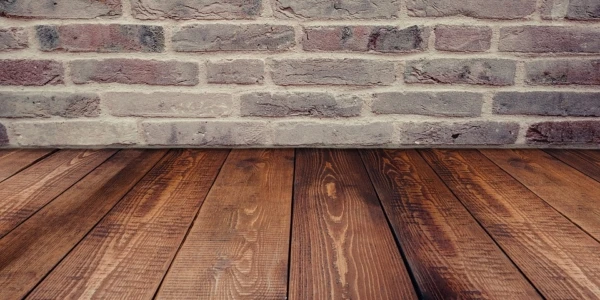Laminate Flooring — Your Secret Enemy in Interior Design

Laminate flooring is certainly significantly cheaper than solid wood flooring, but from a health perspective, it may not be the best choice.
Although consumer habits have forced the industry to take healthier directions, laminate flooring still contains known toxic substances — formaldehyde, melamine, cyanuric acid, isocyanates, and aluminum oxide.

Laminate flooring is made up of four layers:
- Base layer — for stability
- Middle layer
- Decorative top paper
- Transparent, protective top layer
The middle layer is often made of HDF or high-density fiberboard. To hold the fibers together, adhesives are used, which can be urea-formaldehyde (UF), phenol-formaldehyde (PF), melamine-formaldehyde (MF), polyvinyl acetate (PVAc), or soy-based adhesive (PMDI). However, these substances emit health-damaging toxic substances.
The decorative top paper is made of plastic or paper and has a wood-like pattern printed on it. The different colors used in printing the pattern can also contain health hazardous toxins.
The transparent, protective top layer is usually a durable material. Generally, it is melamine. Since companies often prefer not to mention that it is melamine-formaldehyde, they simply write "melamine". Often the surface is made hard with aluminum oxide, which is also toxic.
The adhesive used to glue the different layers together can also be toxic.
Formaldehyde-containing adhesives are urea-formaldehyde (UF), phenol-formaldehyde (PF), and melamine-formaldehyde (MF). Phenol-formaldehyde emits the least toxic substances. However, since its use requires more effort in one way or another, phenol-formaldehyde is used least frequently. Ideally, urea-formaldehyde would be used most, but since it emits the most toxic substances, factories are forced to settle for melamine-formaldehyde. However, the latter emits carcinogens.
Soy-based glue does not contain formaldehyde, but it does contain isocyanides, which are likely carcinogens and can have a negative effect on human health.
Polyvinyl acetate contains a small amount of formaldehyde, but in general, polyvinyl acetate is also toxic to humans. While thorough research into its long-term effects has not been conducted, there is speculation that it is still a toxic substance.

Are there laminate floors that do not pose a health risk?
Unfortunately, there are no completely safe laminate floors. Since very strong adhesives must be used to hold the fibers together, which must also withstand heat and moisture, it is not possible to use any so-called natural glue.
What are the healthy options?
- Solid wood flooring.
- Floor tiles.
- Carpeting made from natural materials.
- Polished concrete.
Article source: Moodne Kodu




